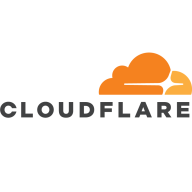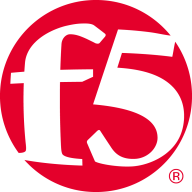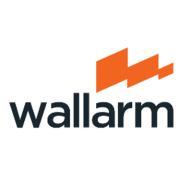


Wallarm NG WAF and NGINX App Protect are key players in the web application security market. While Wallarm NG WAF excels in adaptive security features and automation, NGINX App Protect offers superior integration with NGINX environments, providing a strong security foundation.
Features: Wallarm NG WAF's valuable features include adaptive threat detection, machine learning for real-time adaptation, and the ability to operate in blocking mode effectively. NGINX App Protect offers comprehensive traffic management, security management features, and a command-line interface for simplicity.
Room for Improvement: Wallarm NG WAF could improve its interface and expand integration capabilities for diverse infrastructures. Enhancing support for complex environments and adding more detailed analytics would be beneficial. NGINX App Protect could streamline deployment for non-NGINX infrastructures. More intuitive configuration options and enhanced reporting features could also be areas for improvement.
Ease of Deployment and Customer Service: Wallarm NG WAF offers an easy deployment process with strong cloud-native support and responsive customer service. NGINX App Protect benefits from seamless integration with NGINX setups and a global support network, though it may be complex for users unfamiliar with NGINX.
Pricing and ROI: Wallarm NG WAF delivers a competitive pricing model demonstrating significant ROI through reduced threat mitigation expenses. NGINX App Protect, with potentially higher initial costs, offers extensive features justifying its pricing, providing a good ROI for securing extensive NGINX deployments.


Cloudflare is a highly-regarded Content Delivery Network (CDN) and a Distributed Denial-of-Service (DDoS) protection solution. The robust global connectivity cloud platform that is Cloudflare ensures users are able to connect to the Internet quickly, securely, and reliably. Cloudflare is one of the world's largest networks in the marketplace today. Using Cloudflare, businesses, educational entities, NGOs, vloggers, bloggers, and anyone else with an internet presence can experience more secure, faster websites and applications.
Currently, there are millions of Internet locations on Cloudflare, and the Cloudflare network
continues to grow every day by the thousands. The solution is able to fulfill the requests for
millions of websites seamlessly and serves on average 45 million HTTP requests per second.
Cloudflare has safe, secure data centers in close to 300 cities worldwide to ensure every
client request is filled as quickly as possible. It is Cloudflare’s edge network that makes this
possible by keeping content and other services as close to each client as possible, so the
information requests are always only seconds away.
Many organizations that work in democracy, civil society, human rights, or the arts are able to
access Cloudflare's highest levels of protection for free via Project Galileo. Additionally, official
election websites can be secured from hacking and fraud through Cloudflare’s Project
Athenian, also at no additional cost.
Cloudflare can also help organizations of all sizes develop a robust zero-trust strategy to
ensure the highest levels of productivity and profitability. Employees, stakeholders, and end users have a greater level of satisfaction and overall improved user experience, which can, in
turn, result in higher revenues and overall ROI. Zero-trust and BYOD (bring your own device)
access ensure end users and employees always have the best resources and technology
available to them at all times.
Cloudflare benefits
Cloudflare has many benefits. Some of its most valuable benefits include:
- Faster load times
- Robust DNS security
- Intuitive cloud Web Application Firewall (WAF)
- Free universal SSL
- Image enhancement
- Automatic browser caching
- Next-generation cloud load balancer
- Accelerated Mobile Pages (AMP)
- Rate limiting
- Minification
- Zero-trust capabilities
- Cost-effective
- Reduced carbon footprint
Reviews from real users
“Many websites require an SSL certificate because they sell stuff and want SSL. Cloudflare
comes with an SSL certificate built in. It's automatic. You sign yourself up for Cloudflare, and
an SSL certificate automatically protects your website. If you have a connection between your
website and your host, the server, Cloudflare, and the host, you don't necessarily need a
certificate.” Spencer M., Owner at Tech Exchange
“What I like best about Cloudflare is that my company can use it to trace and manage
applications and monitor traffic. The solution tells you if there's a spike in traffic. Cloudflare
also sends you a link to check your equipment and deployment and track it through peering,
so it's a valuable tool.” Daniel P., Network Engineer at Ufinet
“The most valuable feature of Cloudflare is the GUI. You are able to control the solution very
well through the interface. There is a lot of functionality that is embedded in the service.” PeerSpot user, Competence Center Manager at a tech services company
NGINX App Protect application security solution combines the efficacy of advanced F5 web application firewall (WAF) technology with the agility and performance of NGINX Plus. The solution runs natively on NGINX Plus and addresses some of the most difficult challenges facing modern DevOps environments:
NGINX App Protect offers:
Wallarm NG WAF is utilized to protect against web application threats, enhance security policies, and ensure consistent application security. It provides real-time attack prevention, detailed threat analytics, and automated incident response, making it suitable for both small and large-scale environments.
Wallarm NG WAF offers comprehensive API protection and adaptive security measures integrated with DevOps workflows. It efficiently detects and blocks attacks using AI-driven detection algorithms and provides thorough coverage against OWASP Top 10 threats. Users benefit from its easy deployment, scalability, and user-friendly configuration. Detailed analytics and robust performance in diverse environments make it a reliable option. However, users suggest improvements in documentation, customer support, update frequency, initial configuration process, and better integration capabilities to enhance the overall experience.
What are the key features of Wallarm NG WAF?Wallarm NG WAF is implemented across different industries, including finance, healthcare, and e-commerce. It addresses their unique security needs by providing adaptive protections, detailed threat analytics, and integration capabilities. The scalability and ease of deployment make it an ideal choice for organizations managing large-scale applications and APIs.
We monitor all Web Application Firewall (WAF) reviews to prevent fraudulent reviews and keep review quality high. We do not post reviews by company employees or direct competitors. We validate each review for authenticity via cross-reference with LinkedIn, and personal follow-up with the reviewer when necessary.